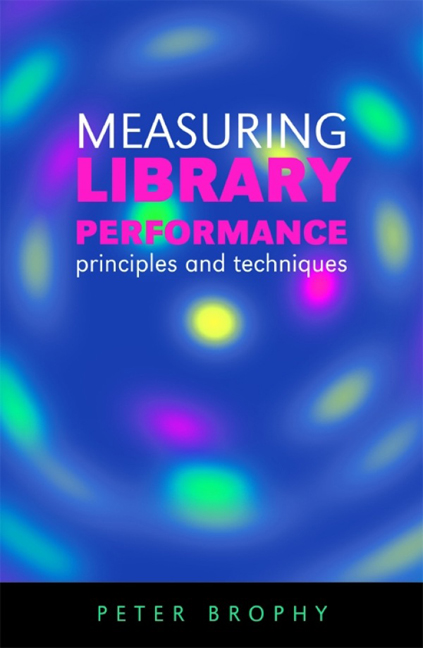Book contents
- Frontmatter
- Contents
- List of figures
- List of tables
- Preface
- Acronyms and abbreviations
- 1 Background
- 2 Theoretical considerations
- 3 User satisfaction
- 4 Impact on users
- 5 Social and economic impact
- 6 Inputs
- 7 Processes
- 8 Outputs
- 9 Staff
- 10 Infrastructure
- 11 Services for all
- 12 Benchmarking
- 13 The balanced scorecard
- 14 Standards
- Appendix 1 Data collection methods
- Appendix 2 The analysis of data
- Appendix 3 The presentation of results
- Index
- Frontmatter
- Contents
- List of figures
- List of tables
- Preface
- Acronyms and abbreviations
- 1 Background
- 2 Theoretical considerations
- 3 User satisfaction
- 4 Impact on users
- 5 Social and economic impact
- 6 Inputs
- 7 Processes
- 8 Outputs
- 9 Staff
- 10 Infrastructure
- 11 Services for all
- 12 Benchmarking
- 13 The balanced scorecard
- 14 Standards
- Appendix 1 Data collection methods
- Appendix 2 The analysis of data
- Appendix 3 The presentation of results
- Index
Summary
■ Introduction
Efficiency of operation – essentially the transformation of available inputs into the maximum number of high quality outputs, or the production of the required number of high quality outputs from as few inputs as possible – is an important part of performance measurement. Apart from any other consideration, accountability for the use of, often public, funding requires that processes are as efficient as possible. Libraries have addressed this requirement for many years. In this chapter we will look at some of the ways in which efficiency can be measured.
A useful perspective on assessing process performance is to think of the organization as a series of units which are dependent on each other, acting as each other's suppliers and customers. The following example illustrates the point:
The professional librarian may decide to order the book in the first instance on the basis of either an earlier request or an assessment of likely demand. He or she then becomes the customer of the acquisitions department which is to arrange for the item in question to be purchased. In turn the acquisitions department becomes the customer of an external supplier. When the book is delivered, the acquisitions department supplies it to the cataloguer – another customer/supplier relationship. Each department of the library will in turn be the customer and the supplier as the book travels down the chain until eventually the circulation department supplies it to the end user, the external customer.
(Brophy and Coulling, 1996)This idea has been encapsulated in the concept ofquality chains, encouraging a stress on the importance of internal customer satisfaction. Using classic definitions of quality, we can ask whether the product which is handed over to the next person in the chain is fit for that person's purpose and meets that person's requirements. Asking these questions provides a powerful tool for identifying where things may be going wrong, or where inefficiencies may be occurring. As with all chains, the strength of the whole is defined by the strength of the weakest link.
- Type
- Chapter
- Information
- Measuring Library Performanceprinciples and techniques, pp. 106 - 112Publisher: FacetPrint publication year: 2006



